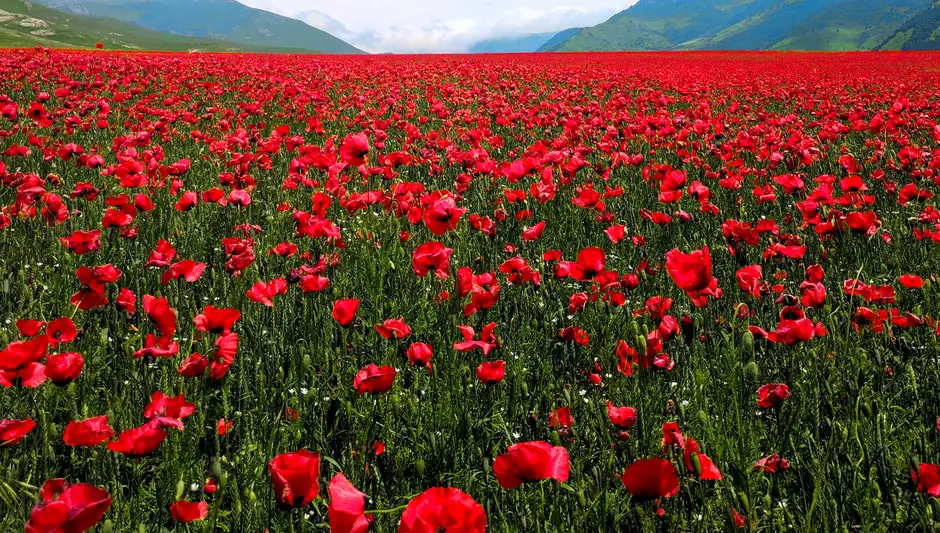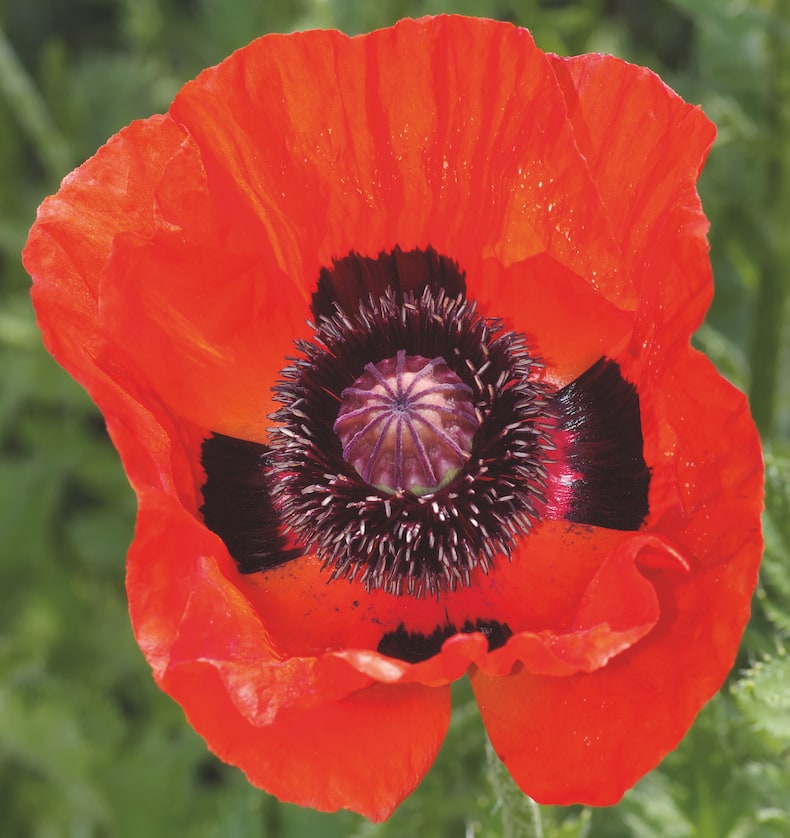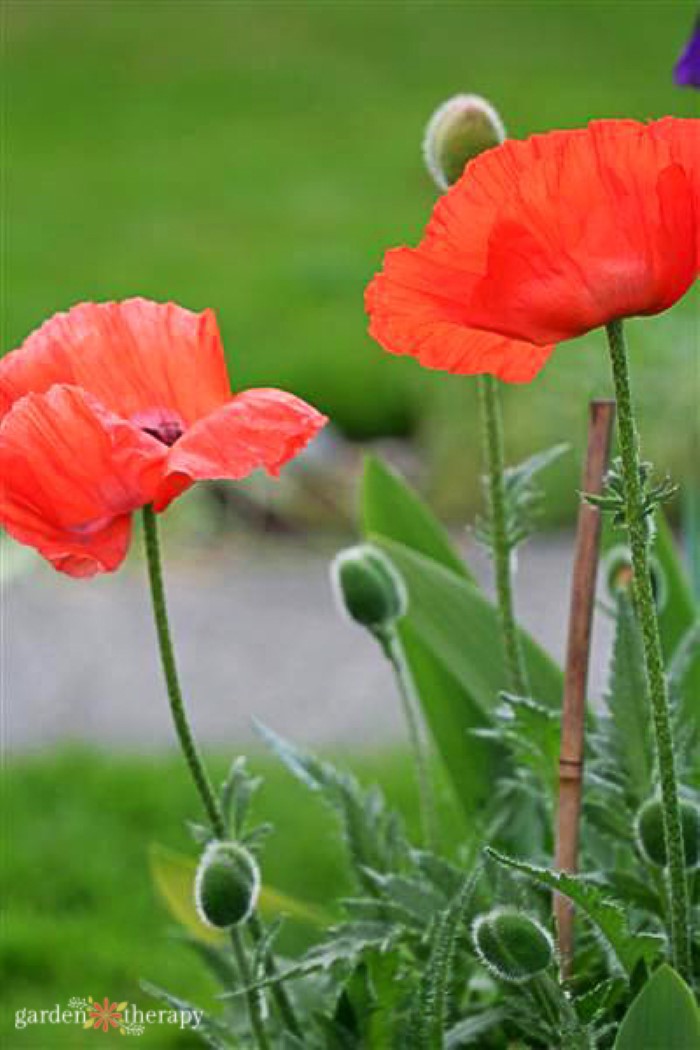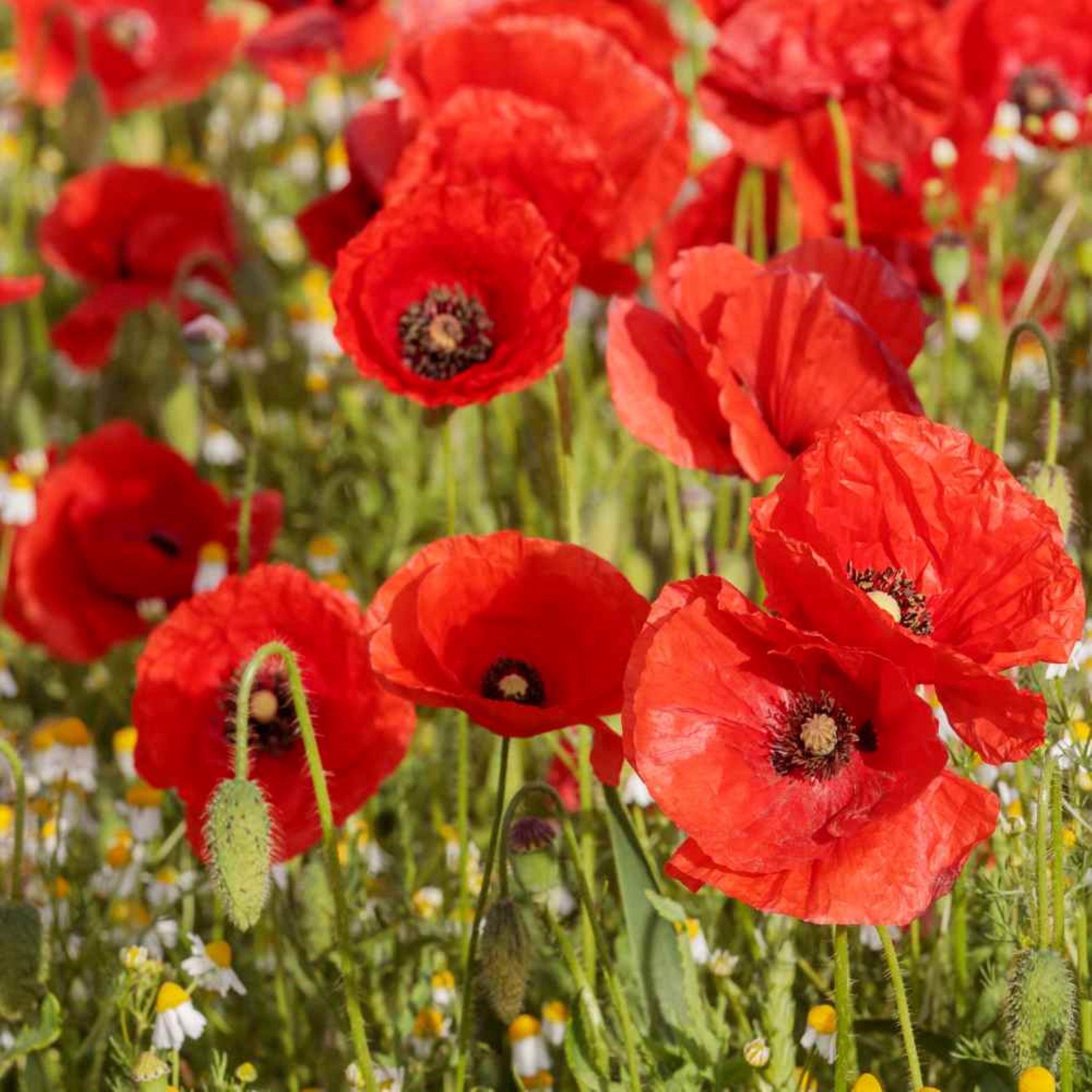Understanding the Life Cycle of Poppies
Poppies are a popular and iconic flower, known for their delicate petals and vibrant colors. However, many gardeners are unsure whether poppies are perennials or annuals. To answer this question, it’s essential to understand the life cycle of poppies and how it affects their growth and maintenance.
In general, perennials are plants that live for more than two years, while annuals complete their life cycle within a year. Poppies can be either perennials or annuals, depending on the specific variety and growing conditions. Perennial poppies typically grow from a crown or rhizome, which allows them to come back year after year. Annual poppies, on the other hand, germinate, grow, produce flowers and seeds, and die all within a single growing season.
The life cycle of poppies typically begins with germination in the spring or fall, depending on the variety. The seeds germinate into seedlings, which grow into mature plants with leaves, stems, and flowers. Poppies produce flowers in a variety of colors, including pink, red, purple, and white. After blooming, the flowers produce seeds, which can be harvested for replanting or allowed to disperse naturally.
Understanding the life cycle of poppies is crucial for providing proper care and maintenance. For example, perennial poppies may require deadheading to encourage more blooms, while annual poppies may need to be replanted every year. By recognizing the differences between perennial and annual poppies, gardeners can tailor their care and maintenance strategies to meet the unique needs of these beautiful flowers.
So, are poppies perennials or annuals? The answer depends on the specific variety and growing conditions. By understanding the life cycle of poppies, gardeners can enjoy these stunning flowers for years to come.
How to Identify if Your Poppies are Perennials or Annuals
Identifying whether your poppies are perennials or annuals can be a bit tricky, but there are some key characteristics to look out for. By observing the growth habits, leaf structure, and blooming patterns of your poppies, you can determine whether they are perennials or annuals.
One of the most obvious ways to identify perennial poppies is by their growth habit. Perennial poppies tend to grow from a crown or rhizome, which allows them to come back year after year. They often have a more robust and sprawling growth habit, with multiple stems and a larger root system. Annual poppies, on the other hand, tend to grow from a single stem and have a more compact growth habit.
Another way to identify perennial poppies is by their leaf structure. Perennial poppies tend to have larger, more deeply lobed leaves that are often a deeper green color. Annual poppies, on the other hand, tend to have smaller, more delicate leaves that are often a lighter green color.
Blooming patterns can also be a good indicator of whether your poppies are perennials or annuals. Perennial poppies tend to bloom in the spring and early summer, while annual poppies tend to bloom in the late spring and early fall. Perennial poppies also tend to produce more blooms over a longer period of time, while annual poppies tend to produce a single flush of blooms.
By observing these characteristics, you can determine whether your poppies are perennials or annuals. If you’re still unsure, you can also try checking the specific variety of poppy you are growing. Some varieties, such as the Shirley poppy, are perennials, while others, such as the California poppy, are annuals.
Understanding whether your poppies are perennials or annuals can help you provide the best care and maintenance for them. By knowing whether your poppies are perennials or annuals, you can tailor your care and maintenance strategies to meet their unique needs.
The Benefits of Perennial Poppies
Perennial poppies offer a range of benefits for gardeners, making them a popular choice for many. One of the main advantages of perennial poppies is their ability to come back year after year. Unlike annual poppies, which need to be replanted every year, perennial poppies will regrow and bloom again without the need for replanting.
This means that perennial poppies require less maintenance than annual poppies. They don’t need to be replanted every year, and they don’t require as much care and attention. This makes them a great choice for busy gardeners or those who want a low-maintenance garden.
Perennial poppies also provide a constant source of beauty in the garden. They will bloom year after year, providing a splash of color and vibrancy to the garden. This makes them a great choice for gardeners who want to add some long-term interest to their garden.
In addition to their beauty, perennial poppies are also relatively easy to care for. They prefer well-draining soil and full sun, but they can tolerate some shade and drought. This makes them a great choice for gardeners who want a low-maintenance, high-reward plant.
Some popular varieties of perennial poppies include the Shirley poppy, the California poppy, and the Himalayan poppy. These varieties offer a range of colors and growth habits, making them a great choice for gardeners who want to add some variety to their garden.
Overall, perennial poppies are a great choice for gardeners who want a low-maintenance, high-reward plant. They offer a range of benefits, including their ability to come back year after year, requiring less maintenance, and providing a constant source of beauty in the garden.
Annual Poppies: When to Plant and How to Care
Annual poppies are a popular choice for gardeners who want to add a splash of color to their garden without the long-term commitment of perennials. But when is the best time to plant annual poppies, and how do you care for them?
The best time to plant annual poppies depends on your location and climate. In general, it’s best to plant annual poppies in the early spring or late summer/early fall, when the weather is cooler. This allows the plants to establish themselves before the heat of summer or the cold of winter.
When planting annual poppies, make sure to choose a location with full sun and well-draining soil. Annual poppies prefer soil that is rich in organic matter and has a pH between 6.0 and 7.0. Sow the seeds about 1/4 inch deep and 1-2 inches apart, and water gently but thoroughly.
Annual poppies require minimal care, but they do need some attention to thrive. Make sure to water them regularly, but avoid overwatering, which can lead to root rot and other problems. You can also fertilize annual poppies with a balanced fertilizer once a month to promote healthy growth and blooming.
One of the most important things to keep in mind when growing annual poppies is to provide them with adequate sunlight. Annual poppies need at least 6 hours of direct sunlight per day to bloom well, so choose a location that gets plenty of sun.
Some popular varieties of annual poppies include the Shirley poppy, the California poppy, and the Icelandic poppy. These varieties offer a range of colors and growth habits, making them a great choice for gardeners who want to add some variety to their garden.
By following these tips and guidelines, you can grow beautiful and thriving annual poppies in your garden. Whether you’re a seasoned gardener or just starting out, annual poppies are a great choice for adding some color and interest to your garden.
How to Encourage Poppies to Come Back Year After Year
Perennial poppies are a delight to have in the garden, but they can be finicky when it comes to coming back year after year. With a few simple techniques, you can encourage your perennial poppies to return and thrive for years to come.
Deadheading is one of the most effective ways to encourage perennial poppies to come back year after year. Deadheading involves removing the spent flowers from the plant, which helps to promote new growth and prevent the plant from putting its energy into seed production. Simply snip off the spent flowers with a pair of scissors or pinch them off with your fingers.
Pruning is another important technique for encouraging perennial poppies to come back year after year. Pruning involves cutting back the stems of the plant to about 6 inches from the ground after the blooming period has ended. This helps to promote new growth and prevent the plant from becoming leggy.
Dividing is a technique that involves separating the roots of the plant to create new plants. This is a great way to encourage perennial poppies to come back year after year, as it allows you to create new plants that will bloom in subsequent years. Simply dig up the roots of the plant, separate them into sections, and replant them in a new location.
Another way to encourage perennial poppies to come back year after year is to provide them with the right growing conditions. Make sure to plant them in a location with full sun and well-draining soil, and water them regularly but avoid overwatering.
By following these simple techniques, you can encourage your perennial poppies to come back year after year and enjoy their beautiful blooms for years to come. Whether you’re a seasoned gardener or just starting out, these tips will help you to get the most out of your poppies and enjoy their beauty for years to come.
Common Mistakes to Avoid When Growing Poppies
When it comes to growing poppies, whether they are perennials or annuals, there are several common mistakes to avoid to ensure their optimal growth and blooming. By being aware of these potential pitfalls, gardeners can take steps to prevent them and enjoy the beauty of their poppies for years to come.
One of the most common mistakes is overwatering, which can lead to root rot and other problems. Poppies prefer well-draining soil and should not be watered excessively. In fact, allowing the soil to dry out slightly between waterings can help to encourage healthy growth and blooming. On the other hand, underwatering can also be detrimental, especially during periods of high heat or drought. It’s essential to strike a balance and provide poppies with the right amount of moisture.
Another mistake to avoid is failing to provide adequate sunlight. Poppies require full sun to partial shade, depending on the variety, and should be planted in a location that receives at least six hours of direct sunlight per day. Inadequate sunlight can lead to weak and spindly growth, as well as reduced blooming.
In addition to these mistakes, gardeners should also avoid planting poppies in areas with poor air circulation. Poppies are susceptible to fungal diseases, such as powdery mildew and leaf spot, which can be exacerbated by poor air circulation. Planting them in areas with good air movement can help to prevent these diseases and promote healthy growth.
Finally, gardeners should avoid using high-nitrogen fertilizers, which can promote weak and leggy growth. Instead, use a balanced fertilizer that is high in phosphorus, which will encourage healthy root development and blooming.
By avoiding these common mistakes, gardeners can help to ensure the optimal growth and blooming of their poppies, whether they are perennials or annuals. With proper care and attention, poppies can provide a stunning display of color and beauty in the garden, and can be enjoyed for years to come.
Poppies in Different Climates: What You Need to Know
Poppies are adaptable plants that can thrive in various climates, but their performance can vary depending on the specific conditions. Understanding how poppies respond to different climates can help gardeners provide the best care and optimize their growth. Whether you’re growing perennials or annuals, knowing how to adapt to your local climate is crucial for success.
In hot and dry climates, poppies require more frequent watering and protection from intense sunlight. Mulching around the plants can help retain moisture and regulate soil temperature. In these conditions, annual poppies may be a better choice, as they can complete their life cycle quickly and produce seeds before the heat becomes too intense.
In cool and wet climates, poppies may require more air circulation to prevent fungal diseases. Planting them in a location with good air movement and providing support to prevent stem breakage can help. Perennial poppies may thrive in these conditions, as they can take advantage of the cooler temperatures and consistent moisture.
In temperate regions with moderate temperatures and rainfall, poppies can grow and bloom profusely. These conditions are ideal for both perennial and annual poppies, and gardeners can enjoy a long blooming season with proper care.
In areas with extreme weather conditions, such as high winds or frost, poppies may require additional protection. Providing a layer of mulch or bringing plants under cover during harsh weather can help protect them from damage.
Regardless of the climate, poppies have similar requirements, including well-draining soil and full sun to partial shade. By understanding the specific needs of your poppies in your local climate, you can provide the best care and enjoy their beauty throughout the growing season.
When growing poppies in different climates, it’s essential to monitor their response to the local conditions and adjust your care accordingly. By being aware of the potential challenges and opportunities in your climate, you can optimize the growth and blooming of your poppies, whether they are perennials or annuals.
Conclusion: Enjoying the Beauty of Poppies in Your Garden
In conclusion, understanding whether poppies are perennials or annuals is crucial for providing the best care and optimizing their growth. By recognizing the differences between these two types of plants, gardeners can enjoy the beauty of poppies in their garden, whether they are perennials or annuals.
Perennial poppies offer the advantage of coming back year after year, requiring less maintenance, and providing a constant source of beauty in the garden. Annual poppies, on the other hand, can add a burst of color and vibrancy to the garden, and can be easily grown and cared for.
By following the tips and guidelines outlined in this article, gardeners can unlock the mystery of poppies and enjoy their beauty in their garden. Whether you’re a seasoned gardener or just starting out, poppies are a great addition to any garden, and with the right care, can provide a stunning display of color and beauty.
So, are poppies perennials or annuals? The answer depends on the specific type of poppy, but with the right care and attention, both perennials and annuals can thrive in your garden. By understanding the life cycle of poppies, identifying whether they are perennials or annuals, and providing the right care, gardeners can enjoy the beauty of poppies for years to come.
In the end, the beauty of poppies is undeniable, and with the right knowledge and care, gardeners can unlock their full potential and enjoy their beauty in their garden. Whether you’re looking to add a pop of color, create a stunning display, or simply enjoy the beauty of nature, poppies are a great choice for any garden.





:max_bytes(150000):strip_icc()/how-to-grow-and-care-for-california-poppies-4686987-03-210f00fcaf404e3fa3c873ea463bb050.jpg)

